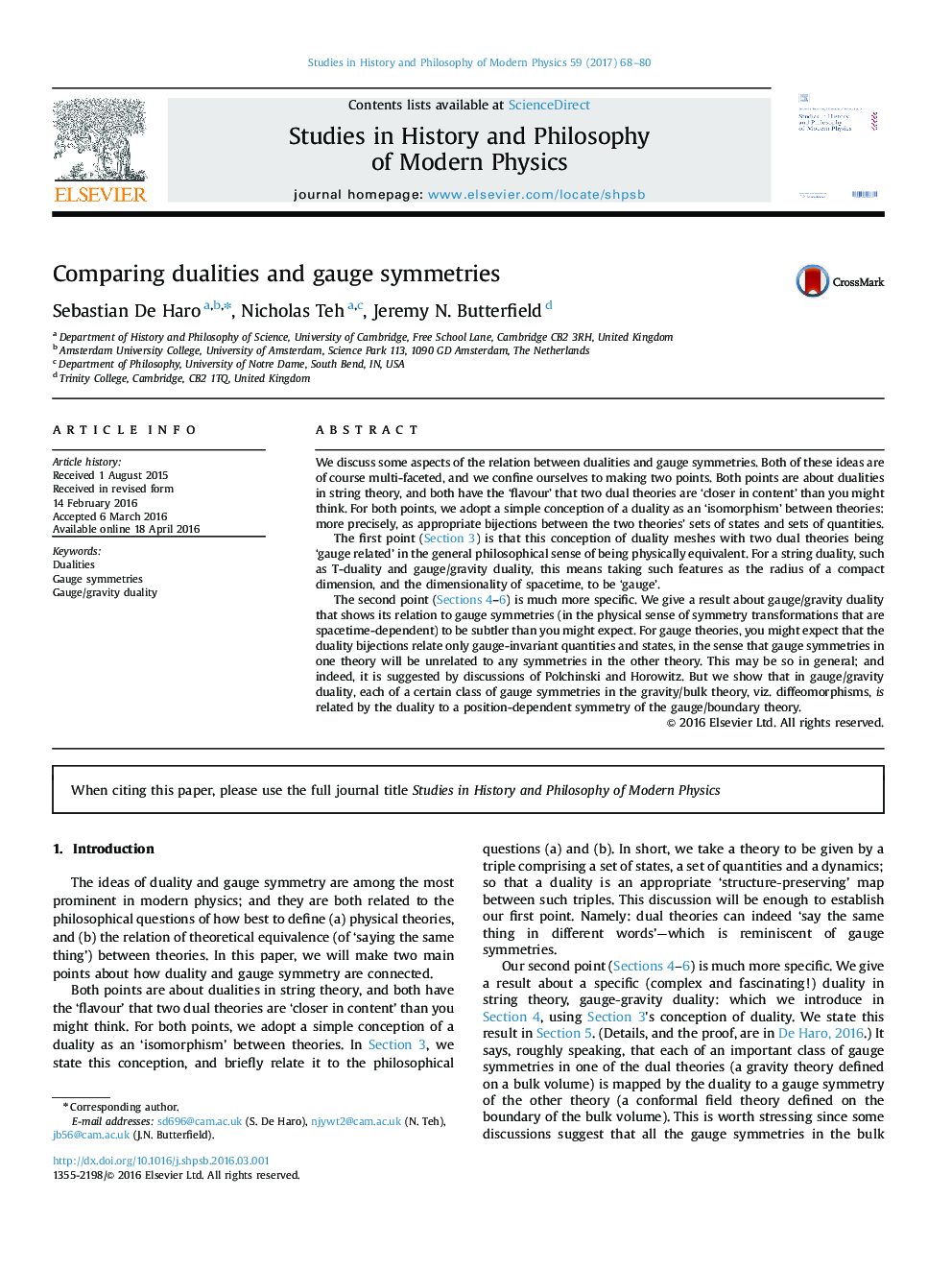| Article ID | Journal | Published Year | Pages | File Type |
|---|---|---|---|---|
| 5130435 | Studies in History and Philosophy of Science Part B: Studies in History and Philosophy of Modern Physics | 2017 | 13 Pages |
â¢Relation between dualities and gauge symmetries discussed.â¢Duality conceived as an isomorphism between theories.â¢Gauge/gravity dualities introduced.â¢Result in gauge/gravity dualities: relation to gauge symmetry subtler than expected.â¢Galileo׳s ship scenario and hole argument discussed for gauge/gravity dualities.
We discuss some aspects of the relation between dualities and gauge symmetries. Both of these ideas are of course multi-faceted, and we confine ourselves to making two points. Both points are about dualities in string theory, and both have the 'flavour' that two dual theories are 'closer in content' than you might think. For both points, we adopt a simple conception of a duality as an 'isomorphism' between theories: more precisely, as appropriate bijections between the two theories' sets of states and sets of quantities.The first point (Section 3) is that this conception of duality meshes with two dual theories being 'gauge related' in the general philosophical sense of being physically equivalent. For a string duality, such as T-duality and gauge/gravity duality, this means taking such features as the radius of a compact dimension, and the dimensionality of spacetime, to be 'gauge'.The second point (Sections 4-6) is much more specific. We give a result about gauge/gravity duality that shows its relation to gauge symmetries (in the physical sense of symmetry transformations that are spacetime-dependent) to be subtler than you might expect. For gauge theories, you might expect that the duality bijections relate only gauge-invariant quantities and states, in the sense that gauge symmetries in one theory will be unrelated to any symmetries in the other theory. This may be so in general; and indeed, it is suggested by discussions of Polchinski and Horowitz. But we show that in gauge/gravity duality, each of a certain class of gauge symmetries in the gravity/bulk theory, viz. diffeomorphisms, is related by the duality to a position-dependent symmetry of the gauge/boundary theory.
